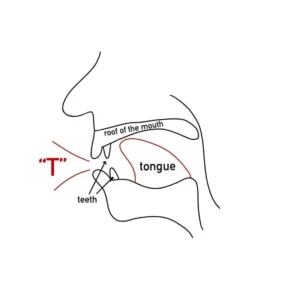By now, many of us know how difficult learning to speak standard American English can be, especially for non-native speakers. One of the key challenges is pronouncing the letter T correctly, as it follows several different pronunciation patterns. For those who desire to speak with pronunciation and prosody more closely resembling a native American speaker, this goal presents three unique challenges.
First, English has a diverse range of vowel and consonant sounds that may not be present in a person’s native language. In fact, English features a wide array of vowel sounds—many more than other languages. According to the University of California, Irvine, English contains significantly more vowel sounds than languages that typically have only five or six. This variety can make pronunciation particularly tricky for non-native speakers.
The second, and likely more frustrating reason, is the irregular spelling and pronunciation patterns in English. Modern English incorporates various languages, including Latin, ancient Greek, French, German, and Dutch. With adaptations of these languages come adjustments in pronunciations, leading to the omission of sounds in words. Examples include salmon and debt.
Finally, English is a fairly inconsistent language with “rules” that are frequently broken. Pronouncing the letter T is no exception! In this article, we will examine the letter “T” and discuss the rules around its pronunciation. If your goal is to develop a more standard American English speech pattern, understanding the four primary pronunciation rules for “T” will help. These rules are influenced by the location of the T within the word and the intention of the message.

How to Pronounce the Letter T in English
To master pronouncing the letter T, you need to understand its four primary variations. These depend on the T’s position within a word and how native speakers naturally modify it.
1. The Clear T: The Standard Pronunciation
The clear T occurs when the tongue presses against the alveolar ridge (behind the upper front teeth), builds pressure, and releases a small burst of air. This pronunciation is crisp and distinct. You hear this pronunciation at the beginning of words like top, take, and talk. It also appears at the end of words when emphasizing a point.
✅ Example: What! (spoken with emphasis)
2. The Stopped T: When Airflow is Cut Off
In the stopped T, the tongue touches the alveolar ridge, but the air is not released. Instead, the sound stops abruptly. This pronunciation appears in words like cat, robot, and first. It also occurs before consonants, such as in football and butler.
✅ Example: I can’t go. (The “t” in “can’t” often sounds like a sudden stop.)
3. The Flapped T: The Soft D-Like Sound
The flapped T sounds like a quick “D” because the tongue lightly taps the alveolar ridge with less tension. This occurs between vowels (better, water), after an R (party, forty), or before an L (little). It also appears in connected speech, as in it is (“i diz”).
✅ Example: I need a bottle of water. (Sounds like boddle of woddur in casual speech.)
For a deeper understanding and practice of the flapped T sound, you can refer to this comprehensive guide on American English pronunciation.
4. The Silent T: When the T Disappears
The silent T occurs when a T comes before an N, making it nearly disappear. This happens in words like internet, plenty,and center. Some words, such as tsunami and tzar, also have silent Ts due to foreign language origins.
✅ Example: I found it on the internet. (Sounds like “innernet.”)

5. The TR Combination: A Shape-Shifting Sound
When T is followed by R, it often shifts to a “ch” sound. Words like tree, trick, and treat may sound like chree, chrick,and chreat. This is a common feature of American English pronunciation.
✅ Example: Try this trick! (Sounds like Chry this chrick!)
Why Does the Letter T Change?
Native speakers modify the pronunciation of T to make speech more fluid and natural. These changes help reduce effort while maintaining clarity. If you’re learning English, training your ear to recognize these shifts will help you understand native speakers more easily. Practicing these variations will also make your own speech sound more fluent and natural.
Improve Your T Pronunciation with Accent Training
Mastering pronouncing the letter T improves clarity and confidence in speech. If you want personalized coaching to refine your pronunciation, our Accent Advantage Program can help. Whether you need clearer speech for business, public speaking, or daily conversations, we offer customized training to fit your goals.
Contact us today to start improving your pronunciation!
